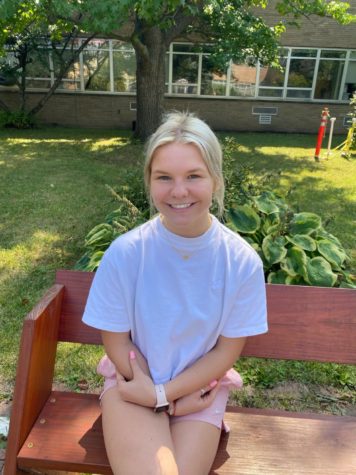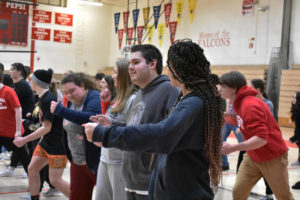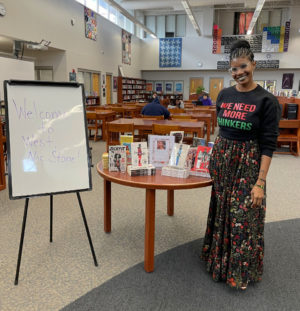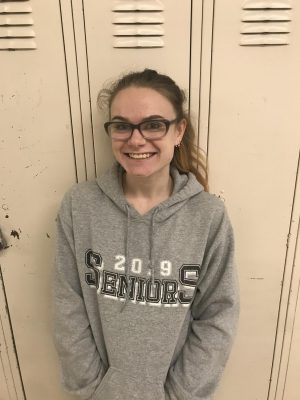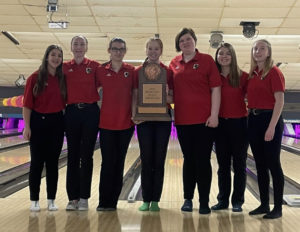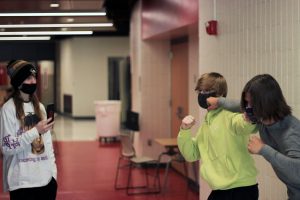Saving lives one drop at a time
As blood stations are set up, phlebotomy nurses are ready for the incoming donors. Giving blood can be a hesitant choice to some people, but the outcome is life-changing. “Just knowing that I can help other people just by giving blood, and [the fact that] it takes so little time, that the thought of being able to save someone’s life motivates me to give blood,” senior Alexa Glandon said.
April 19, 2019
West hosted its first blood drive since Sept.on Thursday, April 18. Due to snow day cancellations, West was not able to host two of their four annual blood drives. By collecting an estimated total of 80 pints, the amount of blood taken in could potentially save 240 people.
“We host blood drives with West four times a year, but within the organization we host them everyday except for Sunday,” Mississippi Valley Regional Blood Center school recruiter and manager of mobile recruitment Teresa Gottschallk said.
To be able to give blood, donors must be at least 16 years of age and in good health. Donors will go through a screening process that will ask them personal questions. They have to be sure that any medications will not play a factor with the blood being taken in because the blood is donated to people who are most likely ill, such as cancer patients, and that the blood is healthy.
“The expected turnout of people here at West kind of depends because since we have a lot of sports in different seasons; many athletes usually can’t donate,” senior Alexa Glandon said. “During the spring is when we have less people, and during the winter we have more, which is when we need more too. We expect about 60 to 80 donors.”
Gottschallk explained how the lowest expected turnout of blood is about ten units, however they can go as high as almost 200 units. They would like to capture at least 90 percent of their goal. The goal for Davenport West is 108.
Tina Wieland, mobile supervisor out of Davenport sheds some light on her experiences and why she does what she does.
“I love my job because I get to work in healthcare and I don’t have to do any direct care of sick patients, yet I still get to help them and I meet very nice people who are often here for their own personal reasons,” Wieland said. “Sometimes it’s because they have had a sick family member that has received blood products, or sometimes it’s in memory of a family member, or maybe it’s multi-generational and their parents and grandparents donated blood.”
For anyone frightened or scared of giving blood, Glandon assures potential donors that there is nothing to be scared of, and that there is often more benefits than just giving blood.
“If you’re scared of it, just don’t be scared. It’s not painful, these people know what they are doing. You’re not going to bleed to death, you will be ok,” Glandon said. “It’s actually kind of fun in my opinion. It gives me an adrenaline rush knowing that you’re saving three lives. You get to come and eat snacks, get out of class, and get a free shirt, so it’s all positive things.”
To be part of the student program for the blood drive, students have to be a member of Health Occupations Students of America (HOSA) at West. As a member of HOSA herself, junior Alex Solbrig believes the experience of donating blood can benefit even greater things.
“I think it’s really important that blood transfusions are able to happen because of all these donations, and it’s a really good experience,” Solbrig said. “You can actually win awards by giving blood along with saving lives of course. People really try to push that message out.”
As the West bloodrive successfully ended at noon on April 18, Gottschallk had one last piece of advice for anyone to remember when donating blood.
“It’s really important for people to continue on with donating blood and seeing the aspects of it,” Gottschallk said. “Our number one reason of people who need blood is actually cancer patients, and we’ve all been impacted by cancer patients in our lives, so it’s important to understand to give back and the mission behind it.”

![As blood stations are set up, phlebotomy nurses are ready for the incoming donors. Giving blood can be a hesitant choice to some people, but the outcome is life-changing. “Just knowing that I can help other people just by giving blood, and [the fact that] it takes so little time, that the thought of being able to save someone’s life motivates me to give blood,” senior Alexa Glandon said.](https://whstoday.com/wp-content/uploads/2019/04/Blood-Drive-900x501.jpg)
